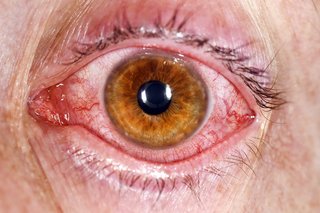10 top tips about conjunctivitis
We will describe 10 top tips about conjunctivitis.
1. Conjunctivitis, also known as ‘pink or red eye’
It is an inflammation of the conjunctiva, which is the thin, transparent layer that covers the white part of the eye and the inner surface of the eyelids.
2. Three main types of conjunctivitis
Viral, bacterial, and allergic. Viral and bacterial conjunctivitis are contagious, whilst allergic conjunctivitis is not.
3. Viral conjunctivitis is caused by a virus
Such as the common cold or flu virus. It usually resolves on its own within a few days to a week. But it can be very contagious especially if it is the viral form.
4. Bacterial conjunctivitis is caused by bacteria
Such as Staphylococcus or Streptococcus. It can be treated with antibiotic eye drops or ointment, and symptoms usually improve within a few days.
5. Allergic conjunctivitis
Is caused by an allergic reaction to substances like pollen, dust, pet dander, or a contact lens. It can be treated with antihistamine or soothing eye drops.
6. Symptoms of conjunctivitis
Include redness, itchiness, tearing, discharge, and sensitivity to light. It does not usually cause eye pain or visual loss. See treatment below if you get those symptoms,


Symptoms may last from a few hours to 2 weeks
7. Conjunctivitis can be prevented
By washing your hands regularly, avoiding touching your eyes, and avoiding sharing personal items like towels or makeup brushes.
8. Treatment for conjunctivitis
Varies depending on the cause. Bacterial cases may need antibiotic eye drops (e.g. 1% chloramphenicol). You can get that from a pharmacy. Viral conjunctivitis clears up on its own, and allergic reactions can be treated with various types of eye drops.
Note. If the infection does not start to get better in 3 days, or you lose vision or have extreme eye pain, see your optician (you need to be examined) or go to the nearest A&E with an ‘eye casualty’ today. Check it has one, before you go. Eye pain and visual loss are red flag symptoms, that usually indicate an alternative diagnosis (not conjunctivitis).
9. Contact lenses can cause or exacerbate conjunctivitis
So it is recommended to avoid wearing them until symptoms have completely resolved (usually at least 3 days).
10. Conjunctivitis can be more serious in newborns
Individuals with weakened immune systems, and those with pre-existing eye conditions. It is important to seek medical attention if you suspect you have conjunctivitis, especially if you fall into one of these high-risk categories.
Summary
We have described 10 top tips about conjunctivitis. We hope you understand it better now.
Last Reviewed on 14 June 2024
